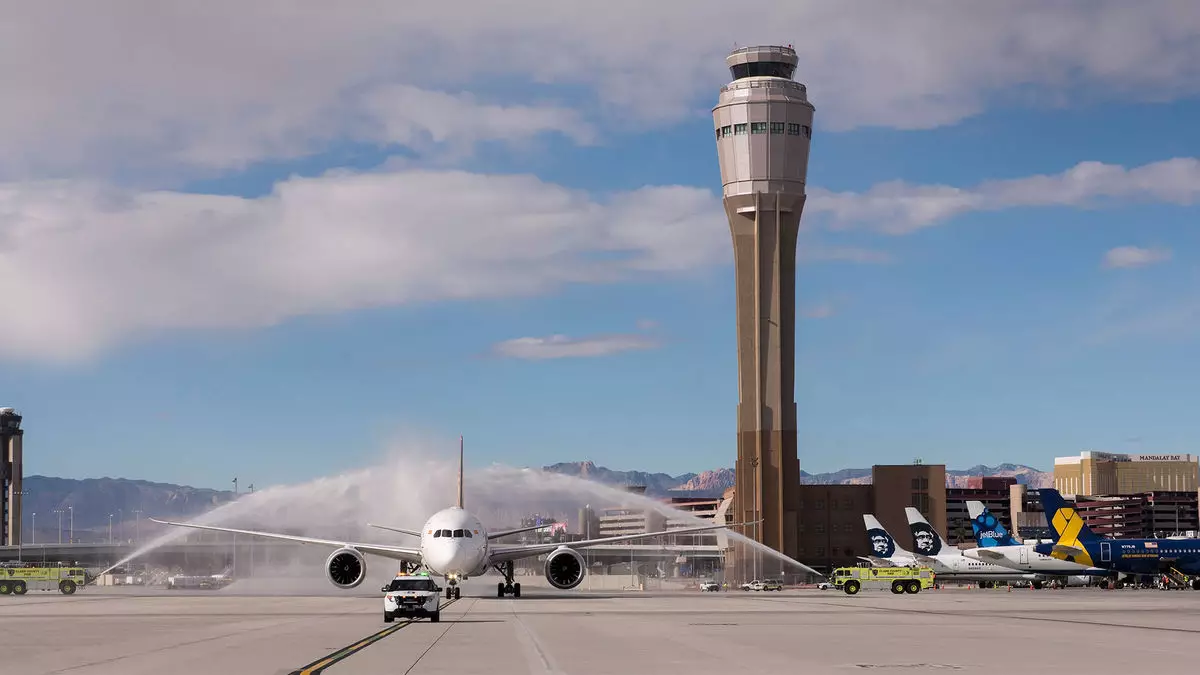As air travel continues to evolve in response to increasing passenger demands, Harry Reid Airport in Las Vegas finds itself at a pivotal juncture. On October 1, the Clark County Commission received a comprehensive proposal from the Department of Aviation focused on revitalizing Terminal 1. This redevelopment aims to incorporate 26 additional gates, ultimately increasing the total to 65. The plan emphasizes replacing the existing outdated satellite gate configuration with a more efficient pier design, reflecting the airport’s commitment to modernizing its services in alignment with the growing travel market.
The significant passenger surge at the airport highlights the urgency for these upgrades. In 2023 alone, Harry Reid Airport welcomed 57.6 million travelers—a remarkable 9.4% increase from the previous year. This burgeoning statistic underscores the necessity of addressing the current inadequacies of Terminal 1, acknowledged by officials like Bryant Holt, who attributes the terminal’s shortfalls to its age and outdated design.
Integral to the proposed expansion is a strategic vision for enhancing passenger experience while improving operational efficiency. The modernization plan will add roughly 46,000 square feet to Terminal 1, ideally situated on the site of the former Terminal 2, deconstructed back in 2016. Holt emphasizes the importance of creating larger hold rooms with improved amenities and state-of-the-art wayfinding technology to facilitate smoother navigation through the terminal.
Moreover, the current operational split between Terminal 1 and Terminal 3—where 75% of passengers reside in Terminal 1 and only 25% in Terminal 3—also necessitates attention. The restructuring of Terminal 3 to function as a new “Terminal 2” helps bridge this operational gap. The redesign involves enhancing ticketing, baggage handling, and overall traffic flow, ultimately ensuring a more streamlined experience for all travelers.
The introduction of new express elevators and a terminal-to-terminal flyover roadway marks a significant advancement in airport infrastructure. These changes aim to segregate airport traffic from pedestrian congestion, addressing a critical pain point for travelers navigating the bustling airport environment. This intelligent design aims to minimize the impact of peak commuter traffic or unforeseen events that can disrupt operations.
While the expansion efforts are ambitious, the financial specifics remain undisclosed, raising questions about budgetary implications. Transportation-related revenues from sources such as landing fees, concession sales, and parking revenues are likely to fund the proposed renovations. This financial model, particularly the integration of gaming revenues generated within the airport, reflects the unique economic landscape of Las Vegas.
Strong support from county officials underscores the urgency of the expansion discussions. Jim Gibson, a county commissioner, articulated a clear message: the enhancements at Harry Reid Airport can’t be postponed in anticipation of a supplemental airport. He stressed the importance of taking immediate action to improve the existing infrastructure to accommodate the growing passenger volume and maintain the airport’s status as a flagship travel hub in the region.
In addition to the current improvements at Harry Reid Airport, the Southern Nevada Supplemental Airport is set to take shape about 30 minutes outside Las Vegas, with a target opening date of 2037. This future airport aims to alleviate some of the ongoing pressure by introducing new airspace and runways that Harry Reid cannot currently offer due to capacity constraints. The Federal Aviation Administration (FAA) has validated the need for such an expansion, indicating a cooperative effort with various governmental entities to uphold land use and protect the surrounding airspace.
The proposed supplemental airport symbolizes a forward-thinking approach that envisions the Las Vegas air travel landscape of the future. It promises to cater to increased general aviation needs during high-demand periods such as major events while allowing Harry Reid to continue serving as a vital node in Nevada’s airport system.
As proposals for the enhancement of Harry Reid Airport and the development of the Southern Nevada Supplemental Airport unfold, it is clear that the region is preparing for a booming future in air travel. While immediate improvements are necessary to handle current volumes, long-range plans promise exciting developments that will ultimately reshape the travel experience. With careful planning and strategic investments, Southern Nevada’s airports are poised to become more than just gateways; they will transform into benchmark facilities for efficiency, passenger comfort, and state-of-the-art aviation technology.


Leave a Reply